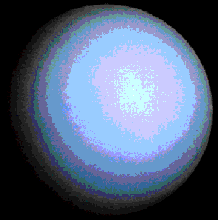This is an image of Uranus.
Click on image for full size
NASA
An Overview of Uranus' Atmospheric Evolution
The giant planets have definitely changed since their
formation. But how much remains to be seen.
Most of the original air of the giant planets remains in place. (The earth-like planets lost most of their atmospheres very soon after they formed because the atmosphere drifted away).
Unlike Jupiter or Saturn, which are made of simple molecules, Uranus is made mostly of icy material. The reason for this is because the cloud from which the planets formed told what kind of material was to form near U
ranus.
You might also be interested in:
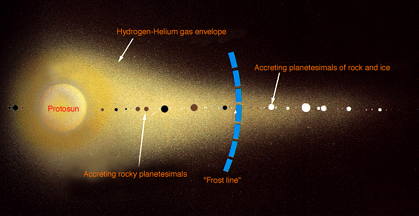
The position of the planets in the solar nebula greatly affected their 1. size and 2. composition. This is because of the effect of how cold it was in the nebula. 1. The nebula was a lot warmer close to
...more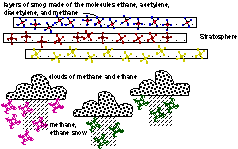
Besides methane, Uranus' atmosphere contains even more complex molecules such as ethane gas. (These gases are similar to the exhaust gases that come out of cars on earth). These molecules form layers of
...more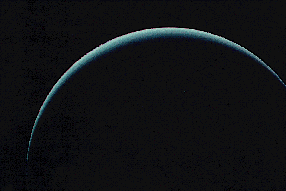
The mesosphere of Uranus is a region of balance between warming and cooling. That essentially means that nothing happens there. Except for diffusion, the atmosphere is still. Upper reaches of the atmosphere,
...more
As on Earth, the atmosphere of Uranus consists of a troposphere, stratosphere, mesosphere, and thermosphere. The troposphere is the region where the visible clouds are to be found. The stratosphere, as
...more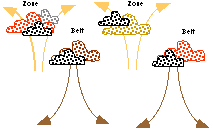
On Uranus, as on Jupiter, the winds in the belts and zones blow first in one direction, then in the opposite direction. Wind blows east in a belt, and west in a zone. The clouds rise up in a belt, and
...more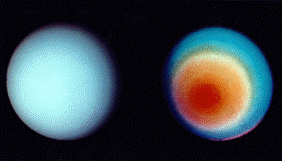
The clouds on Uranus, like Jupiter, are divided into belts and zones. On Uranus the belts and zones are hard to find. The left picture shows the north pole of Uranus. In this picture only the smog of
...more
The clouds of Uranus, composed of methane crystals, are found very low in the atmosphere, and are difficult to see below the smog haze s of the planet. False color is used, in the image of Uranus to the
...more


